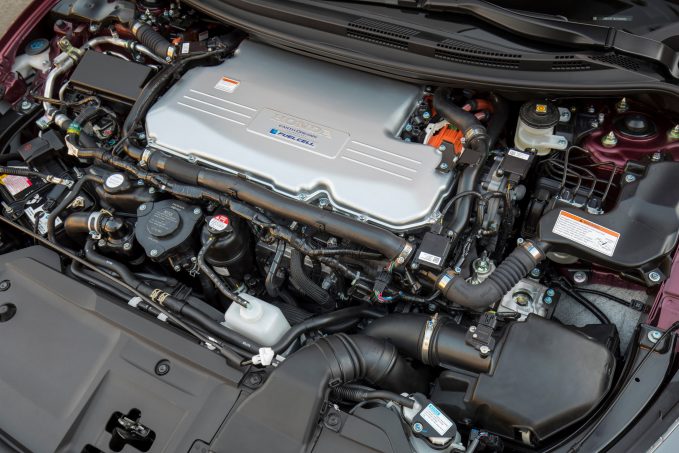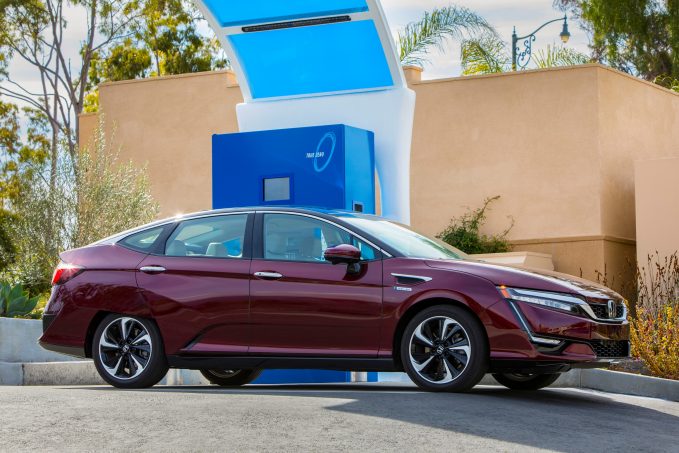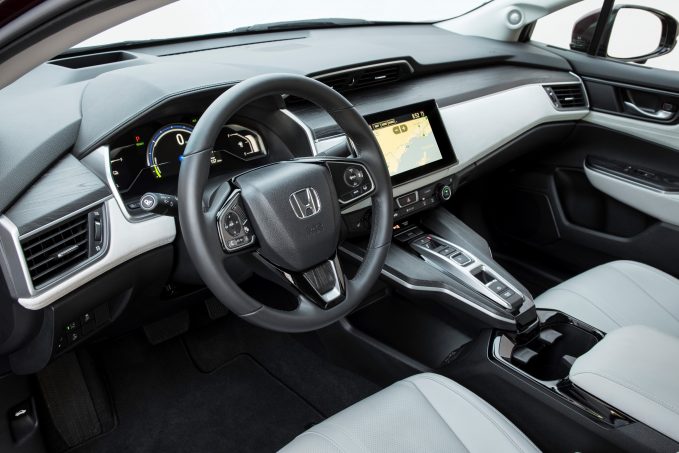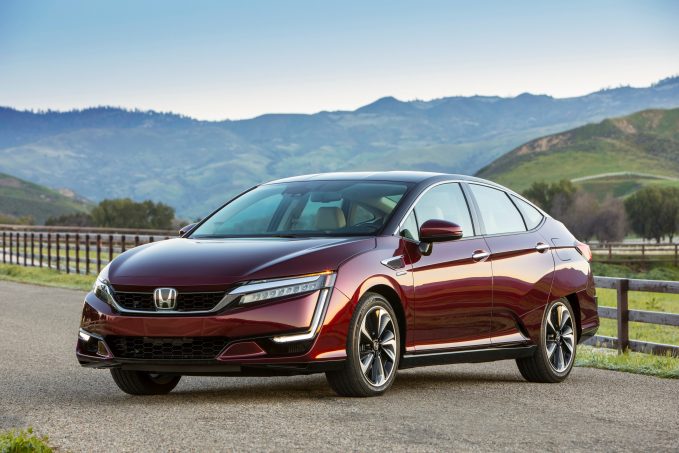Smog greets visitors of Los Angeles as soon as they step off an airplane, much like Hawaiian guests are greeted with a lei. The beautiful mountains are blanketed by the foggy haze of pollution, a result of the many cars, trucks and other vehicles burning gasoline in traffic or on the move.
The solutions that are in place are easy to wrap your head around when viewed in the grand scope of things. By minimizing our reliance on fossil fuels, we can slowly restore the air quality and maybe get an unfiltered view of the horizon in places like Los Angeles.
Offering environmentally conscious consumers vehicles that use no gasoline is one way automakers are trying to help the situation. Electric vehicles have gained popularity with people who hate pumping gas and enjoy the silent thrill of electron propulsion. However, electric cars feature huge batteries, which are capable of being recharged anywhere there’s an electric outlet, but take a long time to reach their full capacity.
Another alternative fuel that’s seen as a potential savior of our blue skies is hydrogen. Cars fueled by hydrogen use quiet and clean electric motors to move around, but a hydrogen-powered vehicle is much quicker to refuel than recharging a battery. It can take just three to five minutes to refill a tank, and when you do, you get an EV-beating range of over 300 miles (482 km). Honda has been offering these hydrogen-fueled cars for over 10 years now, in very limited and niche markets, but is looking to expand the availability and appeal with a new vehicle called the Clarity FCV.
How It All Works
Part of a new series of Hondas that will all be powered by some kind of alternate fuel source, the first model will use a hydrogen fuel cell powertrain, replacing the old FCX Clarity and features some significant changes to the usual hydrogen-powered-car formula.
For starters, the parts of the vehicle that take hydrogen, turn it into electricity and send that power to the front wheels, (lovingly called the fuel-cell powertrain components) now occupy the same space as a V6 engine, meaning it all fits under the hood of the car, and in theory can fit anywhere that Honda’s 3.5-liter V6 can fit.
What doesn’t fit under the hood is a lithium ion battery that’s slightly larger than you’d find in a Accord Hybrid. That sits under the front seats of the car, while the rear portion of the car houses two hydrogen tanks that hold 5.46 kilograms of compressed gas combined. One tank is underneath the rear seats, while the other is right behind them.
SEE MORE: Honda, GM Invest $85M to Build Hydrogen Fuel Cells Together in Michigan
The powerplant is barely sleepy, giving life to an electric motor that makes 174 horsepower and 221 lb-ft of torque, making it feel like something between the four-cylinder and six-cylinder Accord variants. It feels extremely potent and ready to get going. I fired off the line thanks to the instant-on feel of electric motors, and passing wasn’t stressful or worrisome.
On the dashboard, there’s a little blue ball that grows and shrinks as you drive, designed to visually demonstrate your power usage. For those less interested in eco matters, the car also features a sport mode that makes the accelerator pedal more sensitive and also makes the regenerative braking more aggressive so that whenever you let off the pedal it feels like a conventionally powered car would when downshifting. It proved itself fairly sporty in the hilly landscape of Santa Barbara. Pedal feel and acceleration is really smooth and linear and driving the car felt natural in a matter of minutes.
Feels like a Normal Car
In fact, the driving dynamics of the car are standard fare, and very similar to other big sedans like this, regardless of powertrain.
The steering was also nicely weighted and although it was completely lacking in feedback, it is plenty useable for everyday driving.
Honda has gone to great lengths to ensure the Clarity FCV doesn’t feel like a science experiment. It’s refined and quiet with no rattles, and everything is where it should be and acts like it should.
SEE MORE: 2016 Toyota Mirai Review
Sure there’s a push-button gear selector but pushing that D button means that the car will move forward when you hit the accelerator, and when you press the R button it means that the car will move in the other direction instead. There’s really nothing here that will blow your mind – even the interior is well arranged and a continuation of themes found in modern Hondas.
Interior Hits and Misses
The dash is covered with a soft ultrasuede, and the seats feature eco-friendly leather. The central console features a floating console where the push button gear selector is, and underneath that is a storage area that’s ideal for smartphones. It also has two USB ports, one of which is used for the Apple CarPlay and Android Auto support, while the other can be used to charge a passenger’s device.
The infotainment system is just okay, and if you’ve used any of Honda’s recent vehicles you’ll be quickly accustomed to it. It’s a bit slow to navigate and the interface isn’t the prettiest, but it makes Android Auto and Apple CarPlay look pretty good. The biggest issue is the lack of volume knob, which is frustrating.
There are a number of safety and driver assistance features offered with the Clarity FCV, including lane keep assist, the LaneWatch blind-spot camera and adaptive cruise control rounding out the car’s premium and high-tech appeal. There’s also a head-up display, a rarity in Honda-badged vehicles.
Despite the packaging demands of a hydrogen car, the Clarity FCV still features a trunk volume of 11.8 cu-ft and plenty of passenger space. Headroom is very good up front and there’s 37.1 inches of headroom in the back, making it fairly good in the back as well. There’s also space for three passengers in the rear of the car, making it the first hydrogen-powered sedan to offer that kind of accommodation.
The exterior design is interesting without being offensive, like the Clarity’s main competition, the Toyota Mirai. There are functional elements in the design as well, like the front air curtains by the bumper and rear wheels that help air pass through the car more easily for improved aerodynamics. Those strange fender skirts are hard to ignore, but they’re a touch more subtle than the original Insight’s.
The Verdict: 2018 Honda Clarity Review
Is the Clarity good enough to buy? Sure, but it’s just not that easy. It will only be available at limited dealerships for a three-year lease of $369 a month, with $2,868 down. That lease includes some goodies, though, like $15,000 of free hydrogen fuel (which was priced at around $16/kg when we test drove the car ) and 21 days of a luxury car rental, so when you want to travel somewhere that may not have fueling stations for the Clarity, you can get a free rental. The car is also eligible for a sticker to gain access to the High Occupancy Vehicle Lane in certain jurisdictions and there’s also a clean vehicle rebate available to buyers that should help ease the cost of things.
But as good as the car is, it’s hard to come to terms with the scarcity of fueling stations. People may want to breath cleaner air, and reduce the smog, but it comes with a significant amount of planning, and while cars like the Clarity are solid, the next step also includes expanding that hyrdogen infrastructure.












